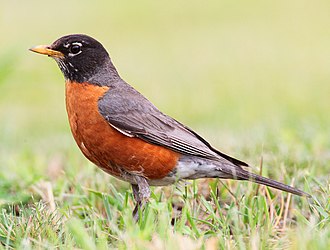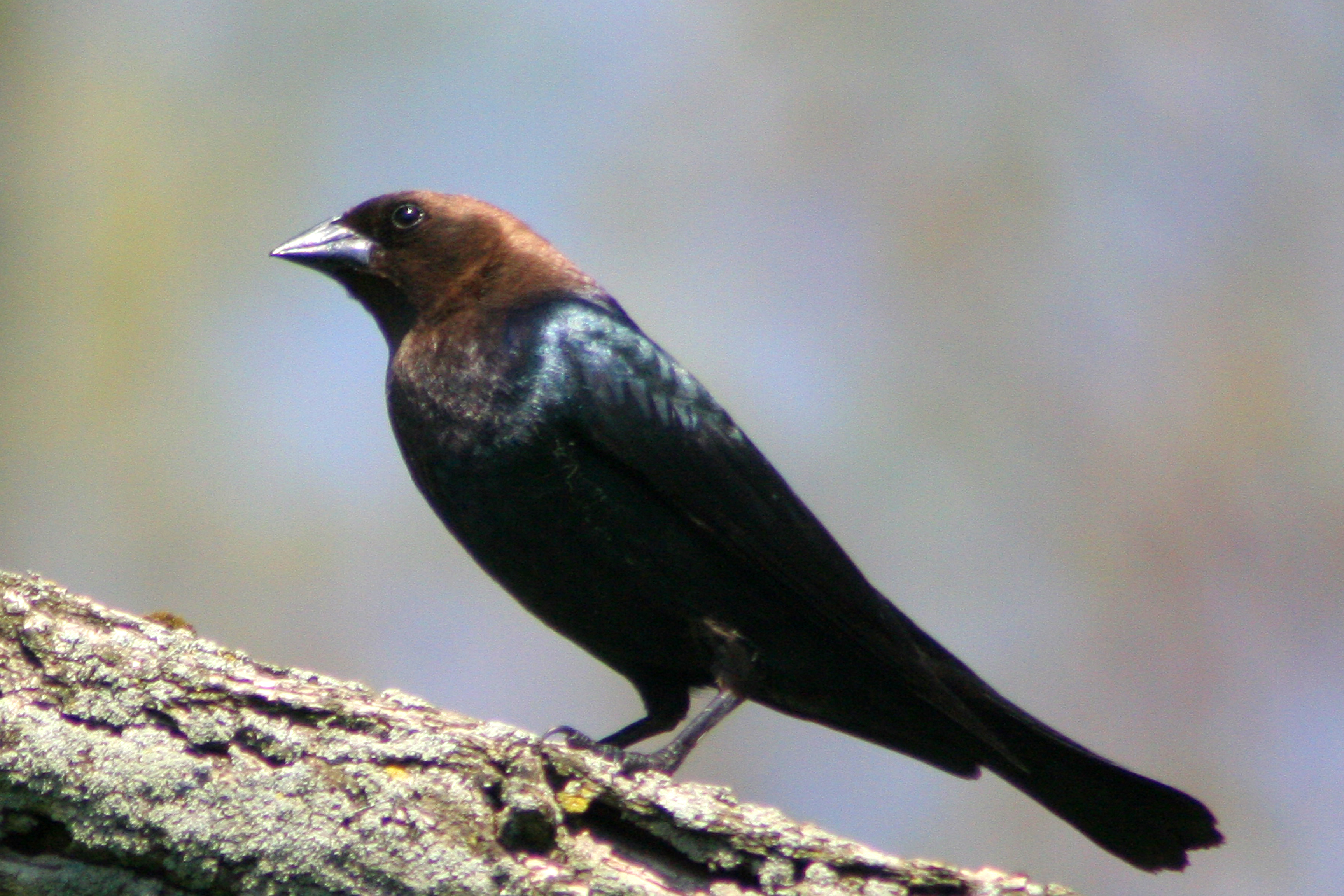託孤(寄生)鳥蛋能否成功是因為視覺系統的限制還是認知系統的精確度?
 |
| 美洲知更鳥 (Turdus migratorius) photo: American robin (wiki) |
摘要
Avian brood parasites lay their eggs in the nests of other birds, and impose the costs associated with rearing parasitic young onto these hosts.Many hosts of brood parasites defend against parasitism by removing foreign eggs from the nest. In systems where parasitic eggs mimic host eggs in coloration and patterning, extensive intraclutch variation in egg appearances may impair the host’s ability to recognize and reject parasitic eggs, but experimental investigation of this effect has produced conflicting results. The cognitive mechanism by which hosts recognize parasitic eggs may vary across brood parasite hosts, and this may explain variation in experimental outcome across studies investigating egg rejection in hosts of egg-mimicking brood parasites. In contrast, for hosts of non-egg-mimetic parasites, intraclutch egg color variation is not predicted to co-vary with foreign egg rejection, irrespective of cognitive mechanism. Here we tested for effects of intraclutch egg color variation in a host of nonmimetic brood parasite by manipulating egg color in American robins (Turdus migratorius), hosts of brown-headed cowbirds (Molothrus ater).We recorded robins’ behav- ioral responses to simulated cowbird parasitism in nests where color variation was artificially enhanced or reduced. We also quantified egg color variation within and between unmanipu- lated robin clutches as perceived by robins themselves using spectrophotometric measures and avian visual modeling. In unmanipulated nests, egg color varied more between than within robin clutches. As predicted, however, manipulation of color variation did not affect rejection rates. Overall, our results best support the scenario wherein egg rejection is the outcome of selective pressure by a nonmimetic brood parasite, because robins are efficient rejecters of foreign eggs, irrespective of the color variation within their own clutch.
把鳥蛋下在別人家裡,讓其他的親鳥把自己的孩子拉拔長大,將飼養子代的成本轉嫁到其他的物種上,對於寄生者來說是一件省資源的好事,但對於被寄生的寄主來說就沒那麼輕鬆了。因此有些寄生者為了有效率的託孤鳥蛋,發展出能夠將鳥蛋生的跟寄主的蛋一樣,讓寄主分不出來,但也有些寄生者似乎不太在意相似度,採取以量取勝的策略,只要看到巢就到處生,這也造成寄主很容易的就把這些外來的蛋認出,使這次的寄生失敗。有意思的是,似乎不是每種被寄生的鳥都認得出來,或是辨識出來也不排除,即使鳥蛋的樣子非常不相似,這樣的行為可能與被寄生的鳥的認知能力系統差異有關。
 |
| 褐頭牛鸝 (Molothrus ater) photo: Brown-headed cowbird (wiki) |
 |
| 褐頭牛鸝與美洲知更鳥的蛋 photo: Don Johnston |
褐頭牛鸝 (Molothrus ater) 就是一種四處到別人家裡生蛋的鳥,而這種鳥的蛋就屬於完全不擬態的鳥蛋。其中的寄主之一,美洲知更鳥 (American robin, Turdus migratorius) 則是能夠高度排除褐頭牛鸝的鳥蛋,有時甚至能達到完全排除。但美國知更鳥的蛋與褐頭牛鸝的蛋差異很大,美國知更鳥之所以能有效率的排除外來的蛋,是因為其認知系統很強大到無論如何都能夠辨識並排除,或是單純的只是因為這顆蛋差異很大很奇怪,因此排除這顆鐵定與我無關的蛋?
| Fig. 1 實驗進行所使用的鳥蛋顏色與反射光譜數據 |
| Fig. 2 增加或減少鳥蛋顏色的條件下,知更鳥排除的比例 |
作者透過行為實驗操作,將褐頭牛鸝的蛋上色成與知更鳥的蛋類似的顏色但深淺不一,將其放入知更鳥的巢中記錄其行為,並且將這些顏色以鳥類的視覺模型檢驗,以推測究竟是認知系統或是視覺差異主導排除外來鳥蛋。結果顯示無論操作的顏色變化,都不會影響知更鳥的鳥蛋排除率,支持知更鳥的認知能夠幫助其排除外來鳥蛋。這個結果也顯示知更鳥的認知系統與寄生鳥蛋在演化上的競爭關係。





0 comments